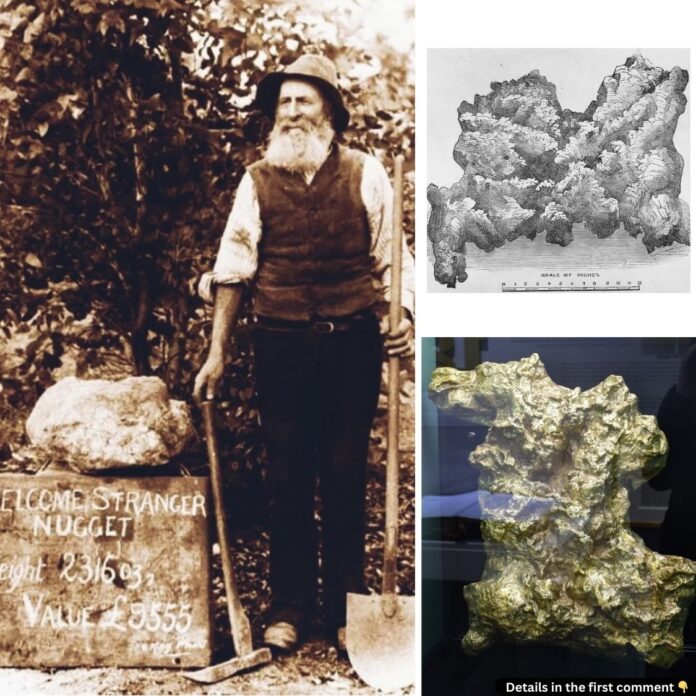The allure of gold has captivated humanity for centuries, symbolizing wealth, power, and prosperity. From ancient civilizations to modern economies, this precious metal has played a crucial role in shaping history. Among the countless stories of fortune and discovery, the tale of the “Welcome Stranger,” the largest gold nugget ever found, stands out as a testament to human ambition and the unpredictable treasures of the Earth. Discovered in the heart of Australia’s Victorian goldfields in 1869, the Welcome Stranger remains a remarkable chapter in the history of gold mining.
The Global Gold Rush Phenomenon
When we think of gold rushes, the California Gold Rush of 1848 often comes to mind. However, this phenomenon was not confined to the United States. Similar waves of migration and exploration occurred in Australia, New Zealand, Brazil, Canada, and South Africa. These events, driven by the promise of untold riches, brought together miners and prospectors from around the globe.
The appeal of alluvial gold—gold found in riverbeds and sediments—lay in its accessibility. With little more than a pan and some patience, fortune-seekers could strike it rich. This ease of extraction, however, often led to rapid depletion of surface gold, forcing miners to invest in more complex and costly methods to reach deeper veins. The social and economic impact of these gold rushes was profound, leading to the establishment of towns, migration of thousands, and, in some cases, the irreversible transformation of landscapes.
Video
The largest gold nugget ever found on Earth is truly a remarkable discovery. Don’t miss the chance to see it in the video!
The Australian Gold Rush

Australia’s gold rush began in earnest in 1851 with discoveries in New South Wales and Victoria. The Australian government actively encouraged migration to these areas, investing heavily in infrastructure to support the influx of miners. Entire communities sprang up almost overnight, turning remote regions into bustling hubs of activity.
While some miners struck it rich, many others found themselves returning to agriculture or other trades, contributing to the long-term settlement of these regions. Despite the eventual decline of gold mining, the gold rush left a lasting legacy on Australia’s economy, population, and culture.
Discovery of the Welcome Stranger
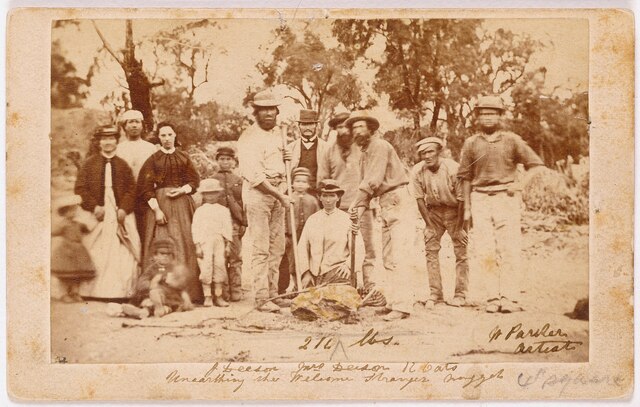
In February 1869, Cornish miners John Deason and Richard Oates stumbled upon an extraordinary find near the small town of Moliagul, Victoria. Working at the base of a tree in Bulldog Gully, just 3 centimeters below the surface, they unearthed a colossal gold nugget. Its sheer size defied belief. At the time, there were no scales capable of measuring its weight.
To address this, the nugget was taken to a blacksmith in the nearby town of Dunolly, where it was broken into three pieces. The total weight was recorded at an astonishing 109.59 kilograms (over 241 pounds). Named the “Welcome Stranger,” this nugget was not only the largest of its kind ever found but also an enduring symbol of the era’s fortunes.
Details of the Welcome Stranger Nugget
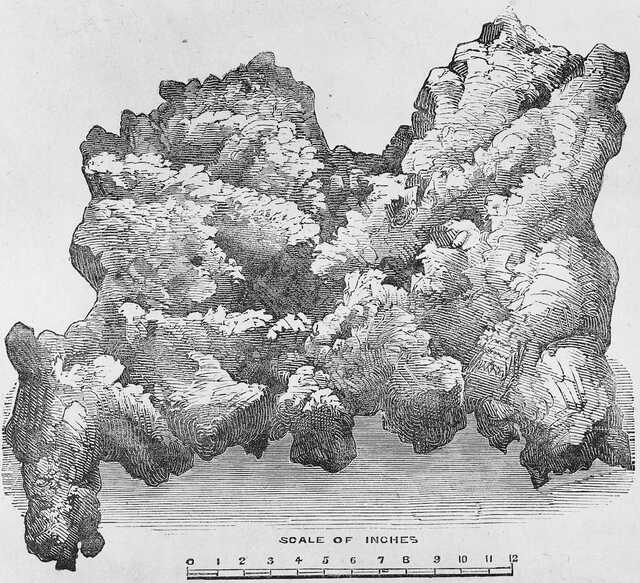
The Welcome Stranger had a net weight of 72.02 kilograms (192 pounds 11.5 ounces) of pure gold after being trimmed. This made it the heaviest alluvial gold nugget ever discovered. Unlike many other gold nuggets, it was exceptionally pure, with an estimated 23 carats.
Deason and Oates transported the nugget to the London Chartered Bank of Australia in Dunolly, where they received an advance of £9,000. The final price, £9,381, was a fortune at the time and is equivalent to approximately £2.3 million ($3.4 million USD) today. The nugget was melted down and shipped as gold ingots to the Bank of England.
Legacy of the Welcome Stranger
The discovery of the Welcome Stranger had a profound impact on the mining industry and local communities. To commemorate the find, a monument was erected near the discovery site in 1897. Replicas of the nugget can be seen in the Old Treasury Building in Melbourne and the Dunolly Rural Transaction Centre, keeping its legacy alive.
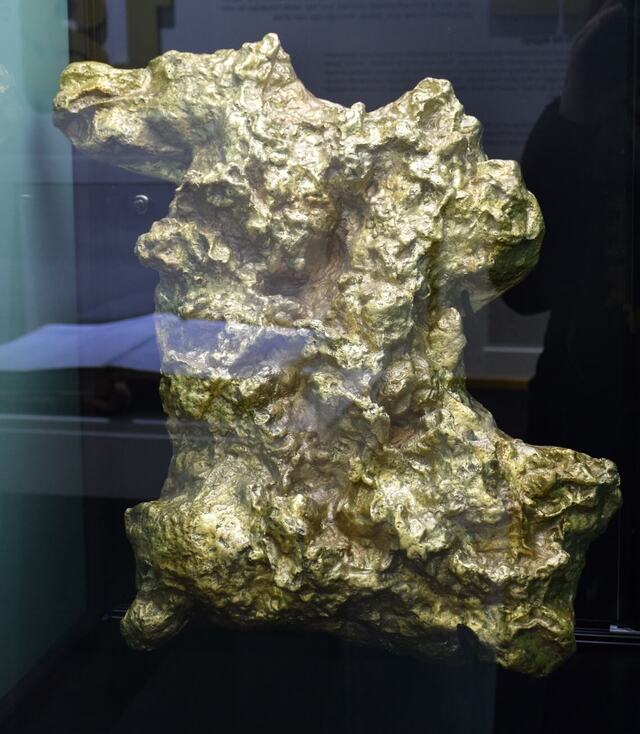
For Deason and Oates, the discovery brought temporary wealth but not lasting fortune. Both men eventually turned to farming. Deason passed away in 1915 at the age of 85, while Oates died in 1906 at 79. Their find remains a testament to the unpredictable nature of gold mining and the fleeting nature of fortune.
Comparison to Other Famous Nuggets
The Welcome Stranger dwarfs other famous gold nuggets in history. For example, the “Welcome Nugget,” discovered in Ballarat, Victoria, in 1858, weighed 69 kilograms (2,217 ounces) and was previously the largest. Another notable find is the “Canaa Nugget,” unearthed in Brazil’s Serra Pelada mine in 1983. Weighing 60.8 kilograms, it remains the largest gold nugget still in existence and is displayed at the Museum of the Central Bank of Brazil.
What sets the Welcome Stranger apart is its combination of size, purity, and the remarkable circumstances of its discovery, just inches below the surface of the ground.
Preserving History and Lessons Learned
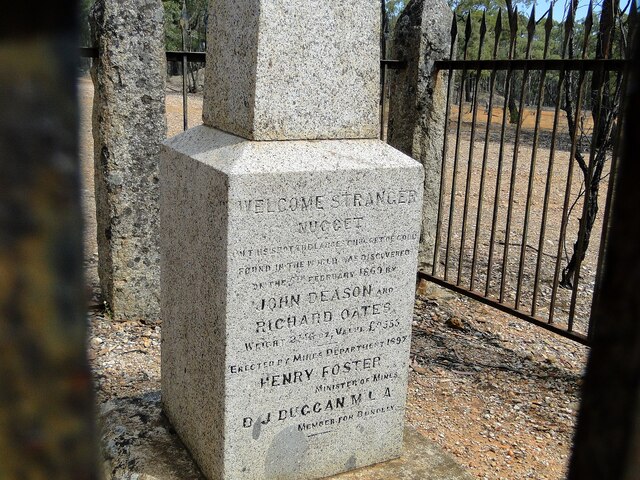
The story of the Welcome Stranger underscores the importance of preserving historical mining sites and artifacts. These discoveries offer a window into the past, shedding light on the lives of miners and the transformative power of gold. However, they also highlight the environmental toll of gold mining, which often leaves lasting scars on the landscape.
Today, as gold continues to symbolize wealth and ambition, the story of the Welcome Stranger reminds us of the fleeting nature of material riches and the enduring value of historical preservation.

Conclusion
The Welcome Stranger remains one of the most extraordinary discoveries in the history of gold mining. Its sheer size and value captivated the world, making it a symbol of both fortune and the human desire to uncover the unknown. For Deason and Oates, the nugget brought momentary wealth but left an enduring legacy that continues to inspire and fascinate.
As we reflect on this incredible find, the Welcome Stranger serves as a reminder of the rich history beneath our feet and the ever-present allure of the Earth’s hidden treasures.
